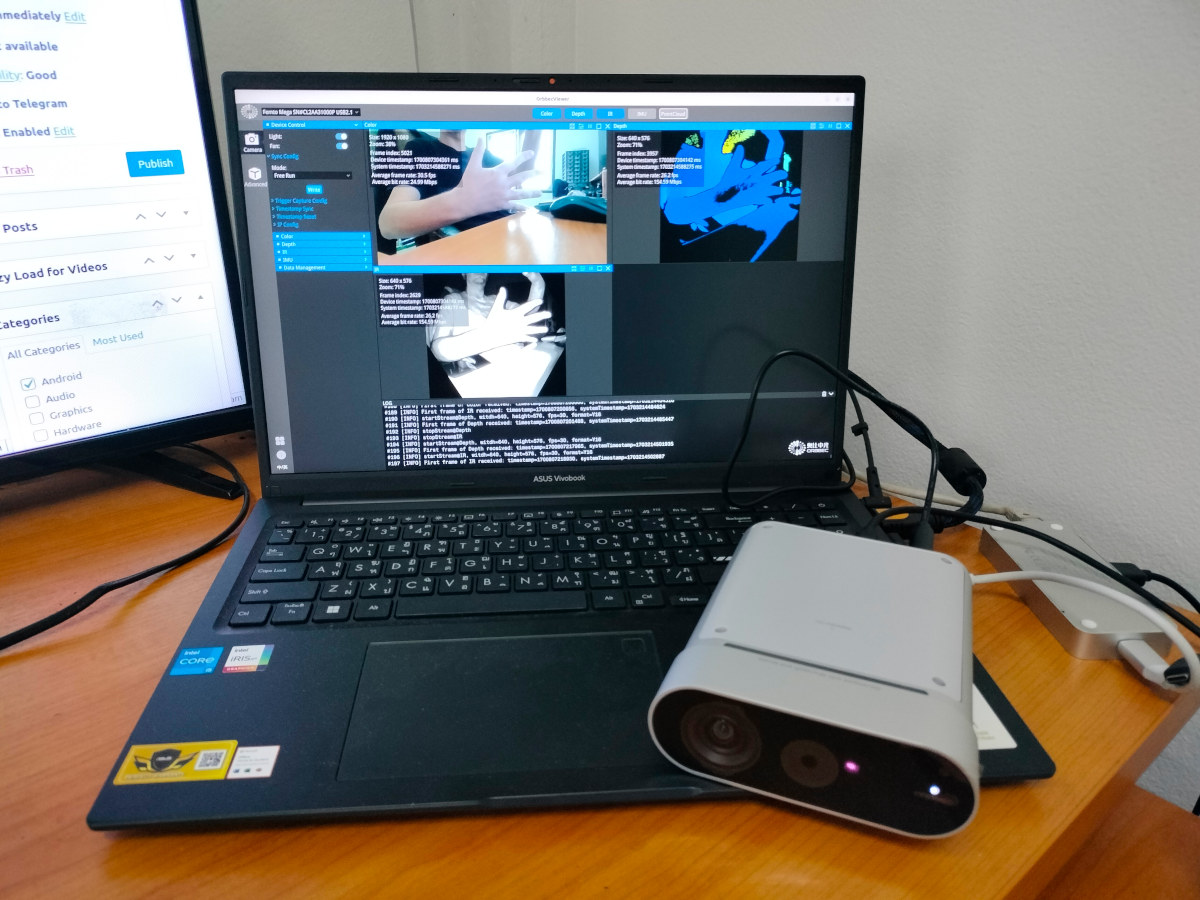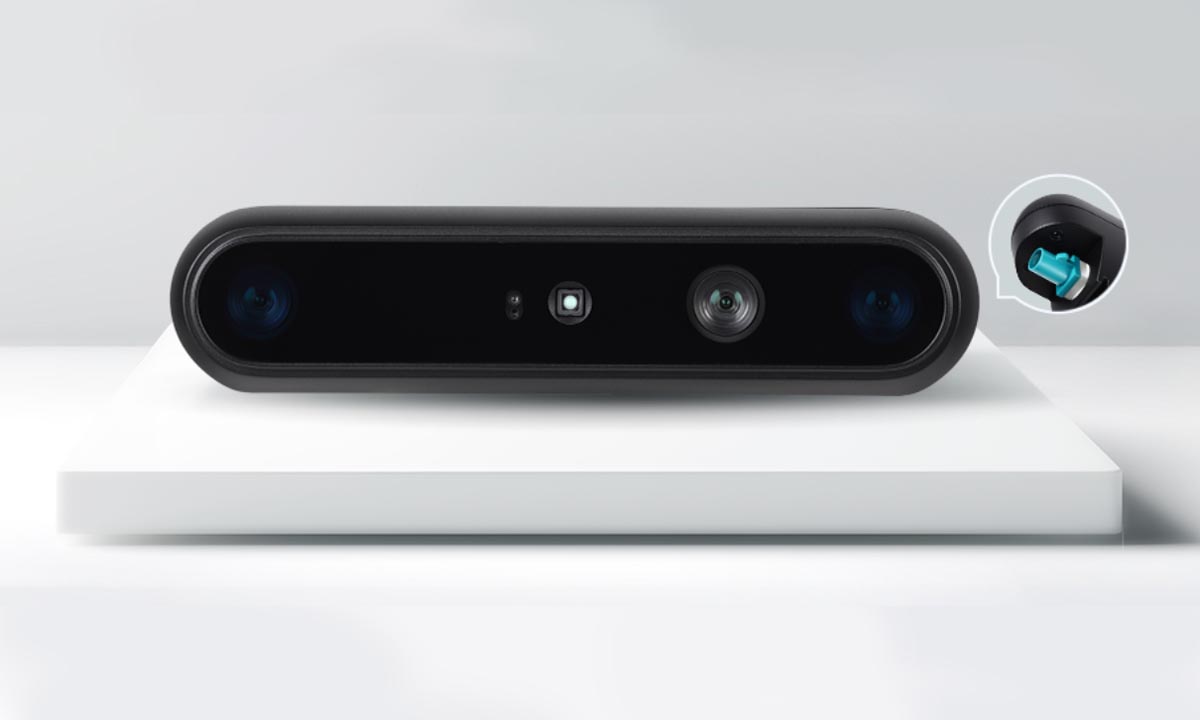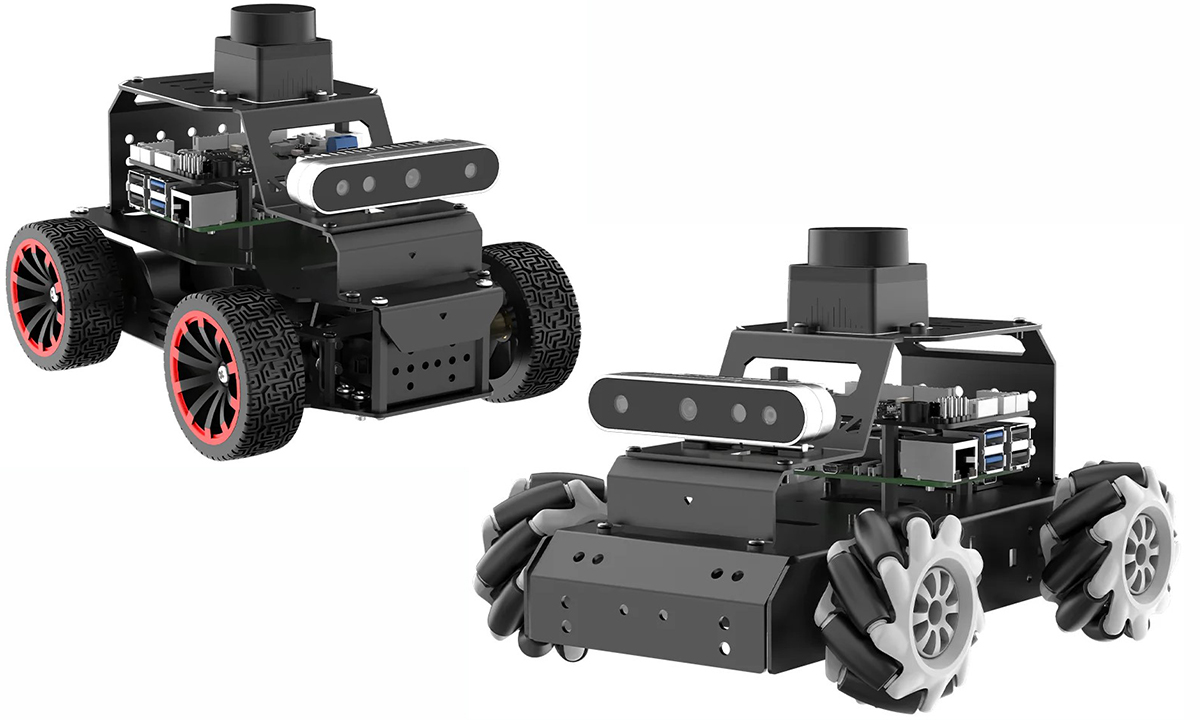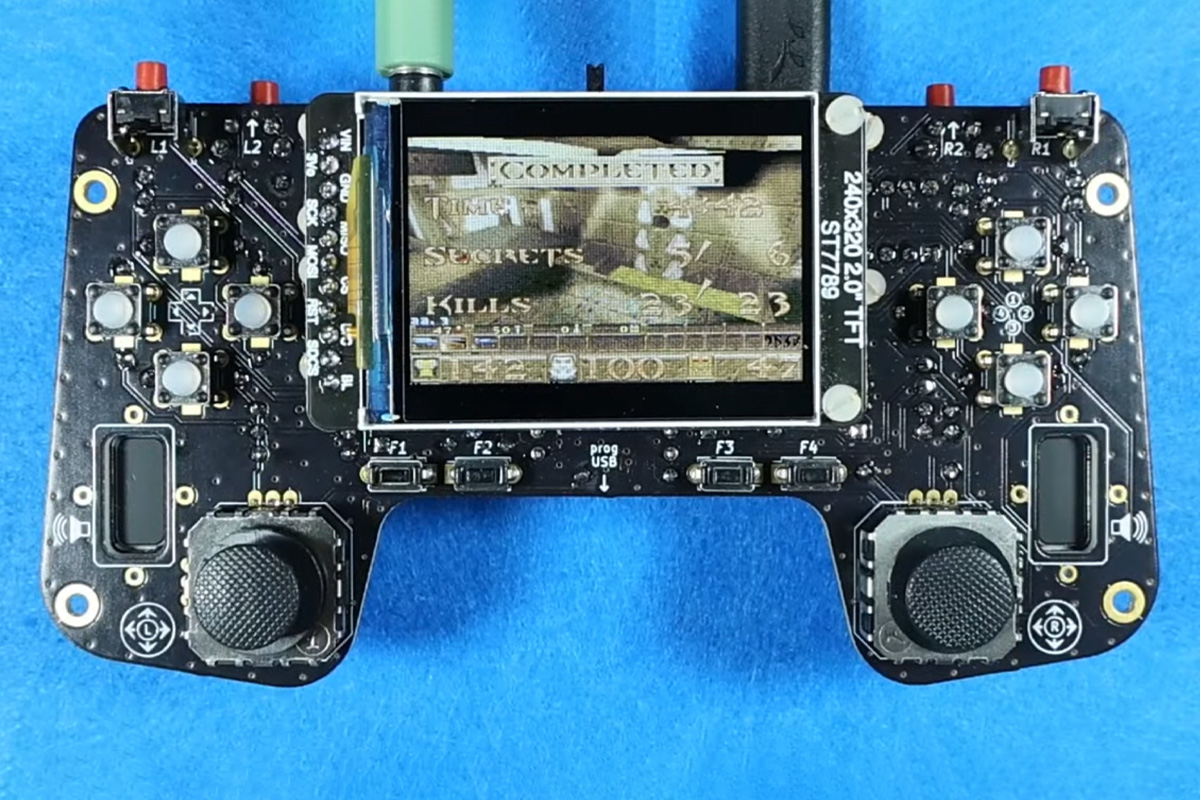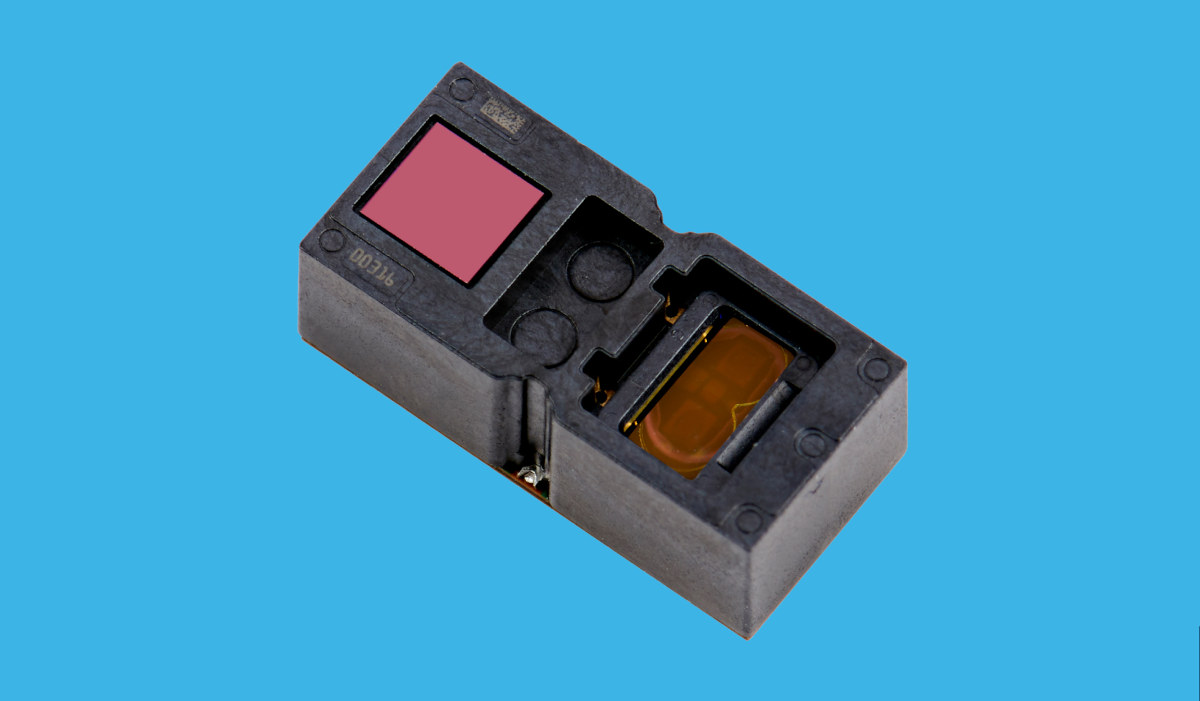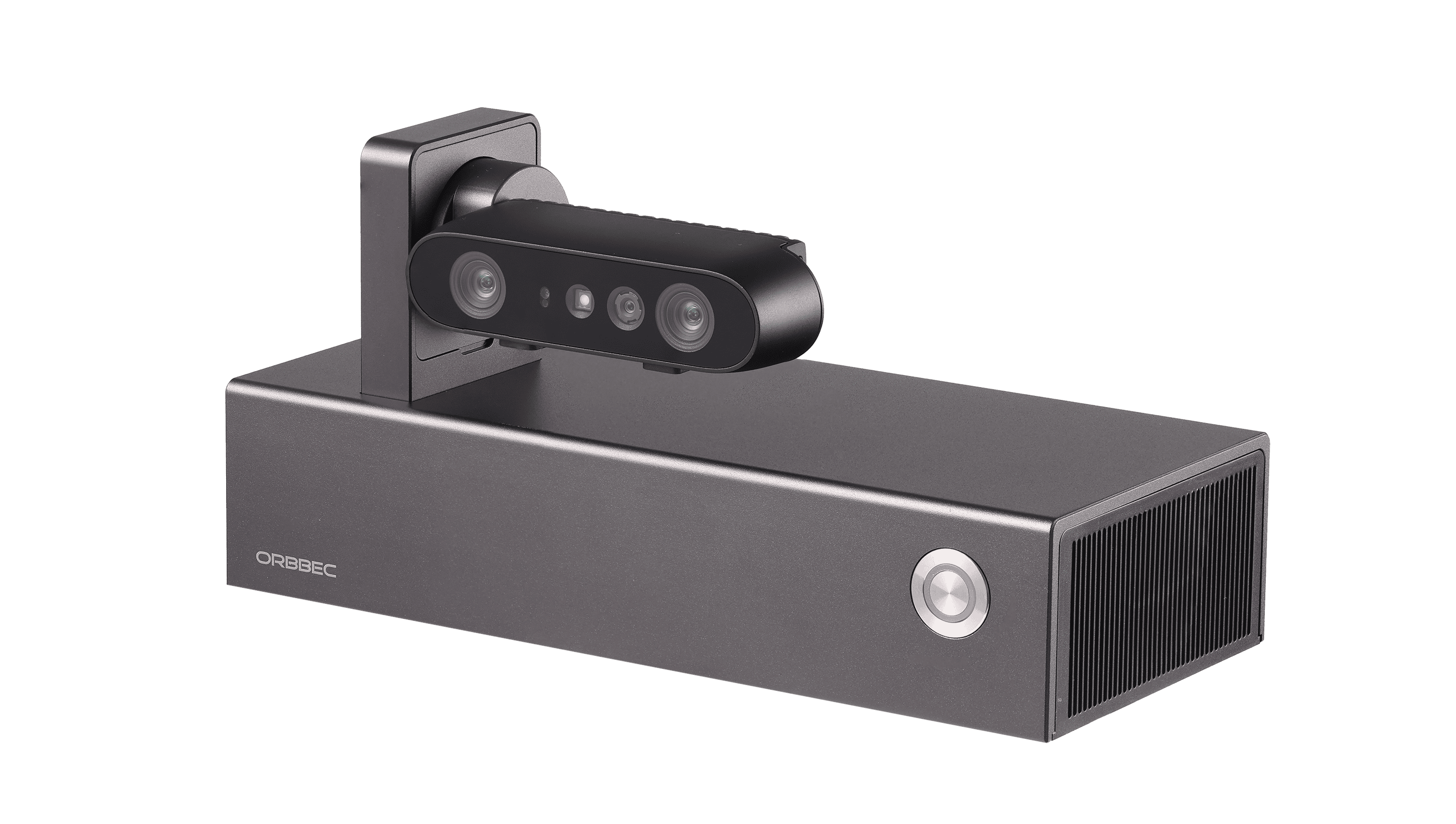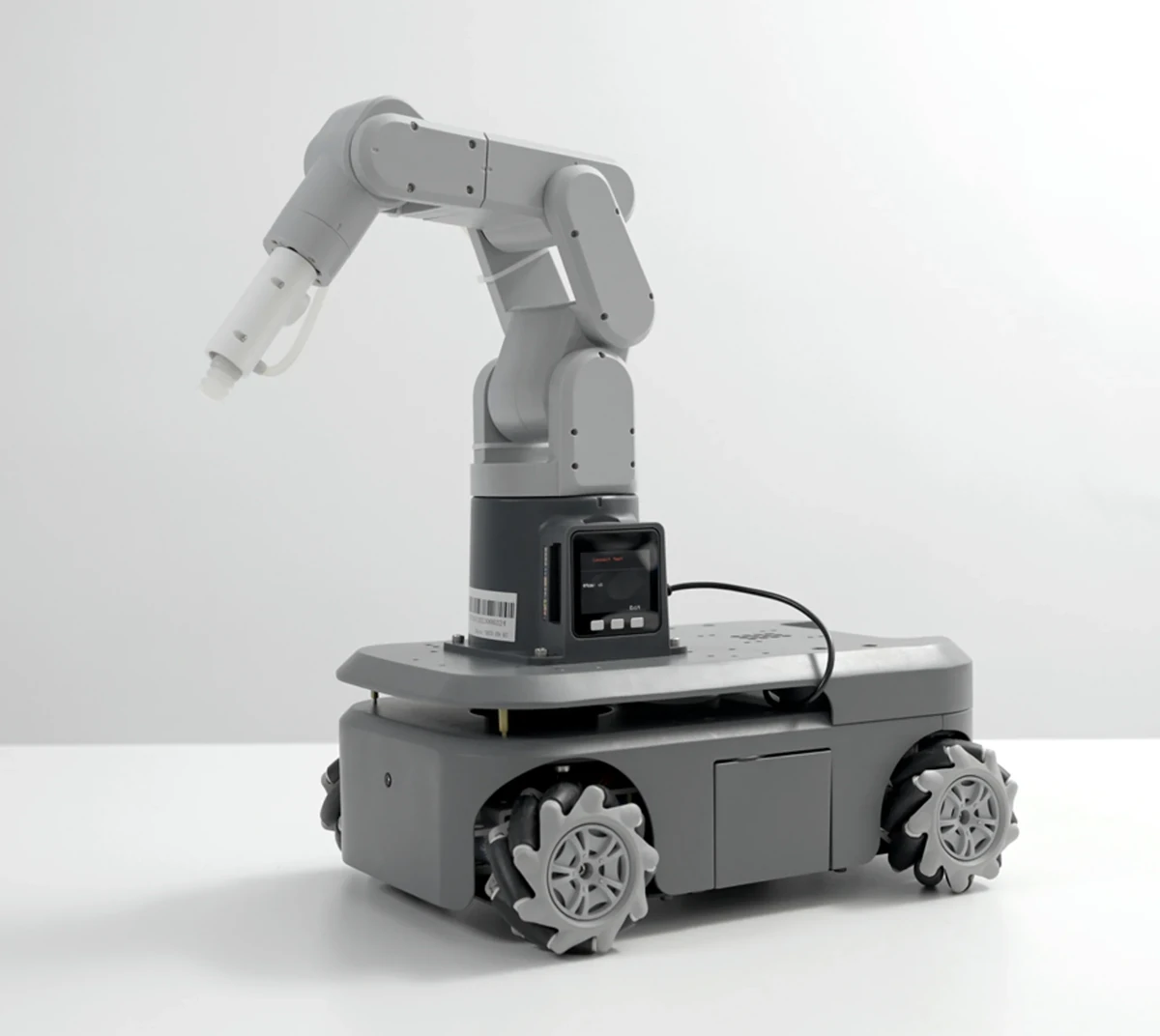The second prize of Giveaway Week 2024 is the Orbbec Femto Mega 3D depth and 4K RGB camera powered by an NVIDIA Jetson Nano module and featuring Microsoft ToF technology found in Hololens and Azure Kinect DevKit. The camera connects to Windows or Linux host computers through USB or Ethernet and is supported by the Orbbec SDK with the NVIDIA Jetson Nano running depth vision algorithms to convert raw data to precise depth images. I first reviewed the Orbbec Femto Mega using the Orbbec Viewer for a quick test connected to an Ubuntu laptop (as shown above) before switching to a more complex demo using the Orbbec SDK for body tracking in Windows 11. Although it was satisfying once it worked, I struggled quite a lot to run the body tracking demo in Windows 11, so there’s a learning curve, and after you have this working, you’d still need to […]
Orbbec Gemini 335Lg 3D depth and RGB camera features MX6800 ASIC, GMSL2/FAKRA connector for multi-device sync on NVIDIA Jetson Platforms
The Orbbec Gemini 335Lg is a 3D Depth and RGB camera in the Gemini 330 series, built with a GMSL2/FAKRA connector to support the connectivity needs of autonomous mobile robots (AMRs) and robotic arms in demanding environments. As an enhancement of the Gemini 335L, the 335Lg features a GMSL2 serializer and FAKRA-Z connector ensuring reliable performance in industrial applications requiring high mobility and precision. The Gemini 335Lg integrates with the Orbbec SDK, enabling flexible platform support across deserialization chips, carrier boards, and computing boxes, including NVIDIA’s Jetson AGX Orin and AGX Xavier. The device can operate in both USB and GMSL (MIPI) modes, which can be toggled via a switch next to the 8-pin sync port, with GMSL as the default. The GMSL2/FAKRA connection provides high-quality streaming with synchronized multi-device capability, enhancing adaptability for complex setups. Previously, we covered several 3D cameras from Orbbec, including the Orbbec Femto Mega 3D […]
MentorPi is a ROS2-compatible, Raspberry Pi 5-based robot car with Mecanum or Ackermann chassis
MentorPi is a ROS2-compatible robot car powered by the Raspberry Pi 5, designed for AI-driven robotics and Python programming. It offers two chassis options: MentorPi-M1, which features a Mecanum-wheel chassis, and MentorPi-A1, equipped with an Ackermann chassis. Both variants come with high-performance components such as closed-loop encoder motors, STL-19P TOF lidar, 3D depth cameras, and high-torque servos. These enable precise navigation, SLAM mapping, path planning, and dynamic obstacle avoidance, making MentorPi an ideal platform for robotics tasks. The system utilizes a dual-controller architecture to optimize performance. The Raspberry Pi 5 handles AI vision processing and strategic functions, while Hiwonder’s RRC Lite expansion board manages motion control and sensor data processing. This task distribution enhances efficiency in machine vision, AI-powered navigation, and robotic control, allowing MentorPi to tackle complex AI and vision-based applications with ease. MentorPi also supports advanced features like 3D visual mapping and YOLOv5-based object detection for recognizing road […]
Arduino Nano Matter powered gamepad runs Quake at 27 FPS
Silicon Labs Solutions architect Nicola Wrachien has designed an Arduino Nano Matter gamepad for which he was successfully able to port Quake, a popular first-person shooter game. We have seen developers and engineers port doom on everything from toothbrushes to GPS receivers. Wrachien was previously able to port Doom on a Sparkfun Thing Plus Matter MGM240P at Silicon Labs’ 30th-anniversary celebration. But to make things more interesting and challenging he wanted to see if Quake could be run on the same MGM240SD22VNA MCU, and he succeeded. In the end, he could not only run the game, but he also implemented improved graphics (better than Doom), better physics, 3D rendering, and much more. This gamepad is built around an Arduino Nano Matter board which features MGM240SD22VNA MCU from Silicon Labs, along with 256KB of RAM, which is very low compared to Quake’s original system requirements which is a minimum of 8MB […]
STMicro VL53L9 is a high-resolution, direct Time-of-Flight 3D LiDAR sensor module
The STMicro VL53L9 sensor is the latest addition to the company’s FlightSense product family. The direct Time-of-Flight (ToF) 3D LIDAR (light detection and ranging) sensor offers a resolution of up to 2,300 zones. The module is described as all-in-one and easy to integrate. It comes in a small, reflowable package that contains all the necessary components for sensing objects and processing images. The sensor features an array of single photon avalanche diodes (SPADs) for photon detection, a post-processing SoC, and two vertical surface emitting lasers (VCSELs) powered by a dedicated bipolar-CMOS-DMOS (BCD) VCSEL. The VL53L9 is a multi-zone ToF sensor similar to the VL53L7CX and the VL53L8, meaning that it offers multi-zone distance measurements up to 54 x 42 zones with a wide 54° x 42° field-of-view. Unlike most IR sensors, the VL53L9 sensor uses backside illumination direct ToF technology to ensure absolute distance measurement, regardless of the target color […]
Orbbec Femto Mega 3D depth camera review – Part 1: Unboxing, teardown, and first try
Orbbec sent us a Femto Mega 4K RGB and 3D depth and camera for review. The camera is powered by an NVIDIA Jetson Nano module, features Microsoft ToF technology, and outputs RGB, TOF, and IR data through a USB-C port or a gigabit Ethernet port. I’ll start the two-part with an unboxing, a teardown, and a quick try with the OrbbecViewer program on Ubuntu 22.04 in the first part of the review because checking out the software and SDK in more detail in the second part later on. Femto Mega depth and RGB camera unboxing I received the camera in a cardboard package showing the camera model and key features: “ORBBEC Femto Mega DEPTH+RGB CAMERA”. The package’s content is comprised of a USB-C cable to connect to the host, the camera, and a 12V/2A power adapter. The front side of the camera features the RGB camera sensor, the TOF (Time-of-Flight) […]
Persee N1 – A modular camera-computer based on the NVIDIA Jetson Nano
The Persee N1 is a modular camera-computer kit recently launched by 3D camera manufacturer, Orbbec. Not too long ago, we covered their 3D depth and RGB USB-C camera, the Femto Bolt. The Persee N1 was designed for 3D computer vision applications and is built on the Nvidia Jetson platform. It combines the quad-core processor of the Jetson Nano with the imaging capabilities of a stereo-vision camera. The Jetson Nano’s impressive GPU makes it particularly appropriate for edge machine learning and AI projects. The company also offers the Femto Mega, an advanced and more expensive alternative that uses the same Jetson Nano SoM. The Persee N1 camera-computer also features official support for the open-source computer vision library, OpenCV. The camera is suited for indoor and semi-outdoor operation and uses a custom application-specific integrated circuit (ASIC) for enhanced depth processing. It also provides advanced features like multi-camera synchronization and IMU (inertial measurement […]
myAGV 2023 four-wheel mobile robot ships with Raspberry Pi 4 or Jetson Nano
Elephant Robotics myAGV 2023 is a 4-wheel mobile robot available with either Raspberry Pi 4 Model B SBC or NVIDIA Jetson Nano B01 developer kit, and it supports five different types of robotic arms to cater to various use cases. Compared to the previous generation myAGV robot, the 2023 model is fitted with high-performance planetary brushless DC motors, supports vacuum placement control, can take a backup battery, handles large payloads up to 5 kg, and integrates customizable LED lighting at the rear. myAGV 2023 specifications: Control board Pi model – Raspberry Pi 4B with 2GB RAM Jetson Nano model – NVIDIA Jetson Nano B01 with 4GB RAM Wheels – 4x Mecanuum wheels Motor – Planetary brushless DC motor Maximum linear speed – 0.9m/s Maximum Payload – 5 kg Video Output Pi model – 2x micro HDMI ports Jetson Nano model – HDMI and DisplayPort video outputs Camera Pi model – […]


